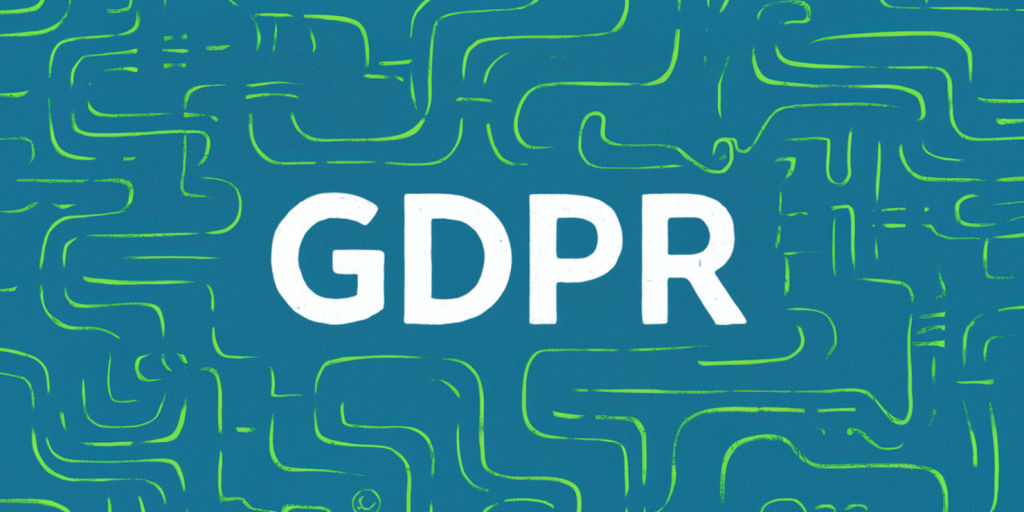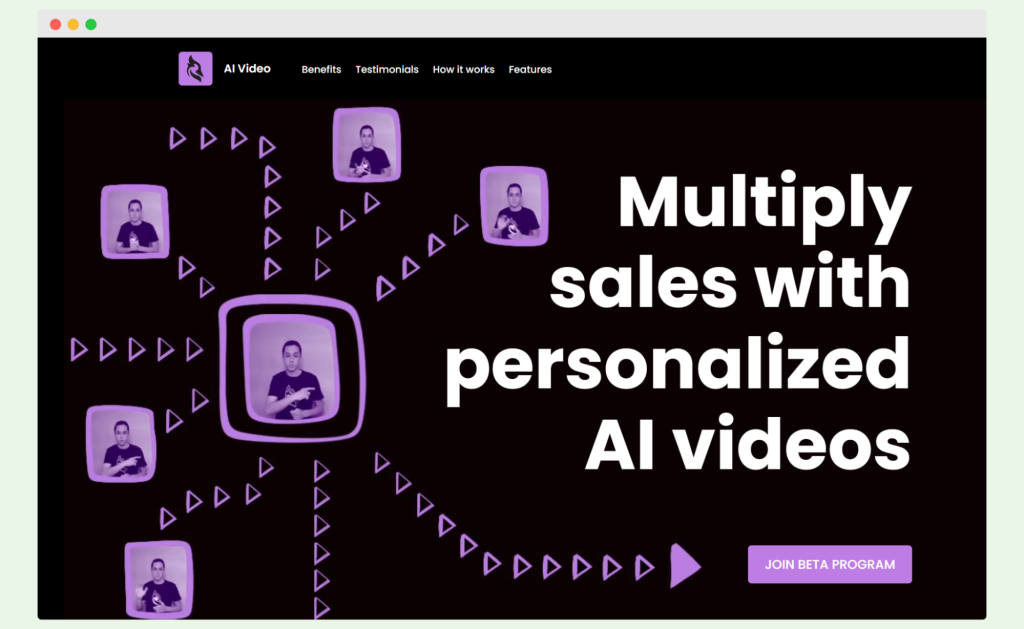How can you ensure your team stays ahead of the competition and consistently hits their targets?
There’s a way – using AI for sales prospecting. But is it the revolutionary tool your sales team needs or just another tech trend?
As we get into this complete guide, you’ll discover how leveraging artificial intelligence can change your sales processes, optimize your sales pipeline, and drive more leads and conversions.
Get ready to explore AI in sales and learn practical strategies to implement these tools for maximum impact.
The evolution of sales prospecting
Sales prospecting (the process of identifying potential customers) has always been a base of the sales process.
In previous years, sales teams relied on manual methods to gather sales data, such as:
- cold calling,
- attending networking events,
- and manually searching through directories.
The traditional approaches were effective, but they were also often time-consuming and brought inconsistent results.
In the early 20th century, sales professionals relied heavily on face-to-face interactions and physical marketing materials to attract potential customers.
The telephone brought a great change. Salespeople could use cold calling to become a primary method for prospecting efforts. However, this method was not without its drawbacks. Cold calling often had low response rates and led to a wasted effort.
The late 20th century saw the introduction of Customer Relationship Management (CRM) systems, which began to streamline the sales process. CRM systems allowed sales reps to track interactions with potential customers faster and provided a centralized database for sales data.
However, the process of identifying qualified leads remained largely manual – sales reps spent a lot of time on research and outreach.
The early 2000s marked the beginning of a more data-driven approach. Companies started leveraging the internet and digital marketing to gather data points on website visitors and engage with them through email campaigns.
Social media platforms like LinkedIn emerged as powerful tools for sales professionals to connect with prospects and share marketing materials. Yet, even with these tools, the process of converting leads into qualified prospects was still largely manual and labor-intensive.
📚 Read more: How to Use LinkedIn to Build Your Personal Brand.
And then… artificial intelligence took over.

In recent years, AI has begun to revolutionize sales prospecting. AI-powered tools now analyze vast amounts of sales data to identify buying signals and predict which prospects are likely to convert.
AI tools can automate many manual tasks that sales reps traditionally handled, such as lead scoring, scheduling meetings, and following up on leads.
With AI, sales teams can focus more on engaging with their target audience and less on the tedious aspects of the sales process.
AI tools have also brought about the rise of virtual receptionists, capable of managing custom workflows and responding to specific job titles within companies.
Generative AI tools can craft personalized prospecting emails and LinkedIn posts, which makes outreach more efficient and targeted.

With machine learning algorithms, sales teams can continuously refine their approach based on data-driven insights, resulting in higher conversion rates.
As we stand on the cusp of this AI-driven era, it’s clear that the future of sales prospecting will be defined by the ability to harness artificial intelligence.
From improving response rates to booking more meetings, AI changes how sales professionals connect with and convert potential customers.
The integration of AI in sales is not just an enhancement, it’s a revolution that promises to redefine the entire sales funnel.
The challenges of using AI tools and methods in sales prospecting
As good as it sounds, AI-powered tools also have some drawbacks:
Integration issues with existing sales pipelines
Legacy systems and established sales processes may not easily accommodate new AI prospecting tools.
👉 For instance, a personality data platform might not seamlessly integrate with a company’s current CRM system, causing data discrepancies and workflow interruptions.
Sales teams need to carefully evaluate compatibility to ensure that AI enhances rather than disrupts their operations.
Dependence on quality data for AI accuracy
Inaccurate or incomplete data can lead to misguided sales processes and poor decision-making.
👉 For example, an AI assistant tasked with lead generation might recommend irrelevant or outdated contacts if the sales data is not regularly updated.
Ensuring data integrity and consistency is crucial for leveraging AI to generate more leads and optimize sales efforts.
Managing AI tools across multiple platforms
Sales professionals often use multiple tools and platforms, from scheduling tools to CRMs. Coordinating AI tools across these platforms can be cumbersome.
Without a unified system, sales teams may find it difficult to track interactions and follow-ups efficiently.
👉 For instance, an AI assistant might schedule a meeting but fail to sync it with the main CRM, leading to missed appointments and confusion.
📚 Read more: Find a CRM That Works Great With A Cold Emailing Tool (Quick Guide).
Ethical considerations and privacy concerns
Collecting and analyzing personality data platforms to predict buying behavior can be perceived as intrusive.
Companies must navigate the fine line between using data for personalization and respecting individual privacy.
Compliance with regulations like GDPR is essential to avoid legal repercussions and maintain customer trust while leveraging AI in sales processes.

Potential bias in AI algorithms
AI systems can unintentionally reinforce biases present in the data they are trained on. It can skew lead generation and sales prospecting efforts, and disadvantage certain groups.
👉 For instance, an AI tool might favor leads from specific demographics based on historical sales data, missing out on diverse prospects.
Check out if you have diverse and representative data, so AI can provide unbiased, equitable sales recommendations.
Overreliance on AI for cold outreach
While AI can enhance cold outreach by automating sales emails and LinkedIn posts, overreliance on these tools can backfire.
Automated messages sometimes lack the personal touch to engage potential customers fully. Sales teams should balance AI-generated content with personalized interactions to ensure prospects feel valued and not just another entry in a database.
Difficulty in measuring AI’s ROI
Unlike traditional sales tools, the benefits of AI, such as improved lead scoring and intent signals, may not be immediately apparent.
Sales teams need to establish clear metrics and benchmarks to evaluate how AI contributes to generating more prospects and closing more deals. They can get the most value from their AI investment, then.
Training and adoption challenges for sales teams
Sales teams accustomed to traditional methods may resist new technologies.

👉 For instance, learning to use AI-powered lead generation tools or virtual assistants effectively can be time-consuming.
Companies must invest in comprehensive training programs to help their sales reps understand and leverage AI tools.
How to introduce AI to your sales teams?
Introducing AI to your sales teams can transform your sales pipeline, but it needs to be done thoughtfully. Here’s how to ensure a smooth transition:
#1 Educate your team:
- Start with training: Provide comprehensive training sessions on how to use AI tools. Cover everything from the basics of AI to specific functionalities of the tools.
- Showcase benefits: Highlight how AI can streamline sales processes, such as improving lead generation and follow-ups.
#2 Choose the right tools:
- Evaluate needs: Identify which AI tools best fit your sales processes. Tools like personality data platforms or scheduling tools can address specific pain points.
- Trial runs: Conduct trial runs with a few team members to gather feedback before full implementation.
#3 Integrate gradually:
- Step-by-step integration: Introduce AI tools in phases. Start with AI assistants for scheduling or lead scoring, then gradually add more complex features.
- Monitor progress: Regularly check how well the AI tools are integrating with existing systems and workflows.
#4 Encourage open communication:
- Feedback loop: Create a feedback loop where sales reps can share their experiences and challenges using AI tools.
- Support system: Establish a support system to help with technical issues and provide ongoing training.
Use our tips on how to leverage AI to improve your sales pipeline. Your team will feel confident and supported as they use new technologies to succeed.
Best practices for using AI tools for sales prospecting
Now, it’s time for what’s advisable when using AI tools!
Define and refine your ideal customer profile (ICP) criteria
Use AI to analyze existing Ideal Customer Profile (ICP) criteria and identify common traits among your most successful accounts.
It may help you target ideal buyers more accurately – your sales team may focus on high-potential leads that are most likely to convert into new customers.
Leverage AI for efficient lead scoring
AI helps in automating lead scoring by analyzing vast amounts of data and assigning scores based on predefined criteria.
👉 For example, AI can evaluate leads based on their interactions with your company, such as visits to your website or responses to LinkedIn posts. It allows your sales team to prioritize leads that show the highest potential.
Utilize AI-driven scheduling tools
The tools can analyze your calendar, suggest optimal meeting times, and even handle rescheduling conflicts.
When you automate scheduling, your sales reps can focus on engaging with prospects rather than managing their calendars.
You will see that the rise in productiveness and the risk of missed opportunities with potential new customers is reduced.
Personalize outreach with AI-generated content
Using data from LinkedIn profiles and other sources, AI tools can craft sale emails and messages that resonate more with your target audience. A personalized approach like this can improve engagement rates, and help to attract ideal buyers.
Use AI for data enrichment and verification
Ensure your contact data is accurate and up-to-date using AI tools.
AI can automatically update phone numbers, and company names, check email addresses and other key information from reliable sources.
Your sales team spends less time on manual data entry, and you have a clean and accurate database.
Implement AI for intent signal analysis
AI can analyze intent signals from various sources, such as website visits, news articles, and social media interactions, to identify prospects showing buying intent.
As you monitor these signals, AI helps sales teams understand when a prospect is likely to be interested in your product or service. You can take more strategic outreach and increase the likelihood of converting leads into new customers.
Streamline workflow with integrated AI tools
Adopt a unified AI platform that integrates various sales tools into one app to streamline your workflow.
Integration allows for seamless data sharing and task management across different tools, improving efficiency.
👉 For example, an AI-driven CRM can automatically update lead information, schedule follow-ups, and track engagement.
It enables sales teams to focus on building relationships rather than managing disparate systems.
Monitor and optimize AI performance regularly
Do it to ensure they are delivering the desired results.
Use metrics such as response rates, lead conversion rates, and booking meetings to evaluate effectiveness. Based on these insights, continuously optimize your AI strategies and tools.
👉 For example, if a certain AI-generated LinkedIn post format yields higher engagement, replicate and refine that approach to maximize impact.
Enhance sales prospecting with data-driven insights
AI for sales prospecting leverages data-driven insights to find and target high-potential prospects.
Based on vast amounts of data points, such as website visitors’ behavior and engagement with marketing materials, AI tools can pinpoint the most promising leads.
Once found, the sales reps can dedicate more time to qualified leads, increasing the efficiency of their sales prospecting activities and, in turn, driving more sales.
Improve sales pipeline efficiency with AI tools
AI can significantly improve your sales pipeline as it automates repetitive tasks and provides valuable insights.
👉 For example, AI sales tools can analyze interactions to identify bottlenecks in the sales process, and help sales reps to address issues promptly.
On top of that, AI-powered lead scoring can prioritize prospects based on their likelihood to convert.
Tailor outreach strategies with generative AI tools
Generative AI tools can revolutionize sales outreach strategies through personalized and engaging content.
These tools can generate tailored emails, LinkedIn posts, and other marketing materials based on specific job titles and industry trends.
Boost sales reps’ productivity with AI assistants
Automate routine tasks and provide actionable insights with AI!
👉 For example, an AI assistant can handle scheduling meetings, follow-up emails, and updating CRM systems.
Identify and target qualified prospects with machine learning
Machine learning algorithms can help sales teams identify and target qualified prospects more accurately.
The algorithms can predict which leads are most likely to convert into customers based on historical sales data and buying signals. Sales reps can then allocate their time and resources better.
Enhance cold outreach effectiveness with AI-powered insights
Cold outreach can be challenging, but AI-powered insights can make it more fruitful.
AI tools can analyze data from various sources, such as news articles and social media, to provide sales reps with relevant information about their prospects.
This allows for more personalized and informed outreach efforts, like referencing a recent achievement or addressing a specific pain point in sales.
There are quite a lot of good practices about using AI, and also many tools to test. However, Woodpecker comes with truly the best of the best ones – check out best AI sales tools for business leaders:
- Lavender AI is an email coach that boosts reply rates by integrating seamlessly with other tools.
- Alyce improves business growth through AI-driven gifting.
- Gamma creates polished, interactive presentations quickly with its no-code platform.
- Pipedrive’s AI CRM features automate tasks, helping sales teams close deals faster.
- Dux Soup ramps up LinkedIn lead generation with automating outreach.
- AI Video from Woodpecker allows you to send personalized sales videos to your prospects.

- Adam.AI optimizes meeting management with its AI-powered platform for better collaboration and follow-up.
The good news is that they all work well with Woodpecker. Check out more of Woodpecker’s integrations.
How AI tools can be used in a sales team: Specific examples
Now, let’s take a look at the specific examples of how businesses can use AI in practice.
Example #1: Tactiq.io and ChatGPT for video transcripts
Using AI tools like Tactiq.io and ChatGPT can make prospecting smooth.
Tactiq.io pulls transcripts from YouTube videos featuring industry experts or your prospects.
Once you have the transcript, leverage ChatGPT to summarize the key points from the video. It can then be used to craft a personalized email that references these insights, giving the impression that you thoroughly reviewed the content.
If your prospect spoke about specific industry challenges, your email can address how your product or service can help solve those issues.
✅ What are the benefits? You demonstrate your attentiveness and also position yourself as a knowledgeable and valuable resource.
Example #2: LinkedIn Sales Navigator and Crystal Knows for personality insights
Crystal Knows gives insights into how they communicate and behave, based on their LinkedIn profiles.
You can use this information to match your communication style with that of your prospect’s personality.
If Crystal Knows shows that a prospect likes direct and brief communication, make your messages clear and straight to the point.
✅ What are the benefits? Personalizing your communication like this can lead to better responses, showing that you understand and respect their preferences.
You build stronger connections and improve the success of your sales activity.
Example #3: Clearbit and Woodpecker for data-enriched email sequences
Clearbit gathers detailed information about companies and individuals, such as company name, industry, size, and role. You can then input this rich data into Woodpecker, an AI-powered sales tool, to automate and personalize your email sequences.
Your sales team can craft targeted email campaigns that directly address the unique challenges of different industries or roles, and make your messages more relevant and appealing.
✅ What are the benefits? AI in sales helps you schedule meetings with qualified prospects, streamline manual tasks, and move leads through the sales pipeline.
Personalizing communications with AI helps sales reps attract more leads and convert them into new customers.
Example #4: Gong.io for sales call analysis
Gong.io records and analyzes sales calls with artificial intelligence to identify successful call patterns and key phrases that resonate with prospects.
The tool provides insights into what works best in your sales calls.
You can train your sales team with these insights to refine their methods and focus on strategies that lead to higher engagement and close rates.
Whenever Gong.io shows that mentioning specific buying signals or addressing particular pain points increases positive responses, your sales reps can use these elements in their calls.
✅ What are the benefits? Sales teams can continuously improve their techniques, making them better prepared to handle various prospect interactions.
Example #5: ZoomInfo and Conversica for lead engagement
ZoomInfo provides a large B2B contact database with detailed information about potential prospects. When you integrate this with Conversica’s AI-driven virtual sales assistant, you automate lead engagement.
Conversica reaches out to leads, interacts with them, and qualifies them based on criteria like company size, industry, and role. The AI assistant can handle initial conversations, answer common questions, and gauge interest levels.
Once leads fit the ideal customer profile, your sales team takes over for more engagement.
✅ What are the benefits? By automating the initial stages of engagement and qualification, you generate more leads and maximize sales performance.
Example #6: HubSpot CRM and Seventh Sense for email timing
HubSpot CRM stores detailed information about your prospects. Seventh Sense analyzes when they prefer to engage with emails to pinpoint the best times for sending them.
If Seventh Sense finds out a prospect likes to read emails on Tuesday mornings, you can plan your email for then. This makes it more likely that your emails stand out and get responses – which may lead to more opens and better response rates.
✅ What are the benefits? Optimizing email timing with AI helps sales teams capture more qualified leads and improve conversion rates.
Example #7: DiscoverOrg and Drift for conversational marketing
DiscoverOrg provides detailed data on potential leads, helping you find the best ones based on company size, industry, and job titles.
You can also use Drift’s AI chatbots on your website to talk to these leads as soon as they visit. The chatbots can handle questions, collect key details, and even schedule meetings for your sales team.
✅ What are the benefits? Combine DiscoverOrg’s powerful data with Drift’s chat capabilities to streamline your sales process, attract more leads, and gain new customers.
Example #8: InsideView and Pipedrive for predictive prospecting
InsideView gives essential market intelligence like company names, industry trends, and key decision-makers. Pair this data with Pipedrive’s CRM to make your sales smoother.
Pipedrive’s AI looks at past data and current metrics to figure out which prospects are likely to become customers. The tool can also spot trends from successful deals to better understand new leads.
✅ What are the benefits? Using AI to rank leads with solid data helps streamline your sales pipeline, lessen manual work, and secure more deals.
Example #9: Leadfeeder and Zapier for website visitor identification
Leadfeeder identifies companies that visit your website by matching their IP addresses with company names. Automate your workflow by connecting this with Zapier.
When Leadfeeder spots a visitor, Zapier can send the lead directly to your CRM, like HubSpot or Pipedrive. It can also start personalized email sequences based on the visitor’s browsing behavior and alert your sales team for quick follow-up.
You don’t miss any potential leads and your sales reps can connect with prospects when their interest is high.
✅ What are the benefits? It helps boost your lead generation, moving more prospects through your sales pipeline and turning them into customers.
Example #10: Seismic and SalesLoft for content personalization
Seismic helps you create and manage a library of personalized sales content, like case studies, whitepapers, and presentations. Connected with SalesLoft, it’s a great combo for sending automatically this content to prospects.
SalesLoft’s AI looks at prospects’ interests and where they are in the buying process to ensure they get the most relevant materials at the right time.
A prospect thinking about buying might get detailed product comparisons, while someone ready to buy might receive success stories and testimonials.
✅ What are the benefits? Sales reps can share content that speaks to each prospect, increases engagement, and moves them closer to a purchase.
Example #11: ZoomInfo and HubSpot for AI-powered lead scoring
ZoomInfo provides comprehensive data on prospects, including company names, phone numbers, and LinkedIn profiles. Integrate this data with HubSpot’s AI-powered lead scoring system, which analyzes prospects based on their engagement and interactions with your company.
It is how it works: AI in HubSpot can assess LinkedIn post interactions, email opens, and website visits to assign scores to leads.
✅ What are the benefits? ZoomInfo with HubSpot combined enhances your lead scoring using artificial intelligence.
Example #12: Woodpecker and Chorus.ai for enhanced sales calls
Leverage Woodpecker and Chorus.ai (by ZoomInfo) to improve your sales calls with artificial intelligence.
Outreach automates and manages your sales communication, while Chorus.ai records and analyzes these interactions. Use AI in Chorus.ai to identify successful call patterns, key phrases, and engagement signals.
These insights can then be fed back into Woodpecker to refine your sales strategies.
For instance, if Chorus.ai highlights that mentioning specific benefits during calls leads to higher engagement, this tactic can be incorporated into Woodpecker sequences. You can use Zapier to connect those two tools.
✅ What are the benefits? When you use AI to optimize and personalize your sales calls, your follow-ups could be more powerful, you improve booking meetings, and ultimately drive higher conversion rates, leading to more new customers.
Conclusion
AI is not just a trend in sales prospecting, it has the potential to change everything in many industries.
Today’s AI tools automate the grunt work and pinpoint high-potential leads. Sales teams now focus on closing deals, not just finding them.
The time for your team to adopt AI is now. Don’t let the competition get ahead. Start by integrating tools like Woodpecker for smarter, more successful sales communication.
Ready to upgrade your sales process with AI? Sign up for Woodpecker today and maximize your sales results.
FAQ on AI for sales prospecting
Check out the answers.
How can AI be used in prospecting?
AI can be used in prospecting by automating tasks like lead scoring, generating personalized sales emails, and analyzing data to identify high-potential leads. It enhances sales engagement and makes prospecting more efficient with AI-driven insights.
What is the AI tool for finding prospects?
AI-powered tools like Woodpecker and ZoomInfo serve as top prospecting tools. They leverage AI to identify, qualify, and engage leads, offering features like mail merge add ons and email tracking directly from your Gmail account.
What is the best AI tool for sales?
Woodpecker is a leading AI tool for sales, automating email sequences, managing auto follow-ups, and enhancing sales engagement. It integrates with your Gmail account to streamline outreach efforts and improve overall sales performance.
How can AI be used for sales?
AI can be used for sales by automating repetitive tasks, personalizing communication, and analyzing data for better insights. It helps sales teams track emails, optimize outreach, and manage their sales pipeline more effectively with AI-driven tools.
How can AI track emails in Gmail?
AI tools like Woodpecker integrate with Gmail mail to track emails, providing insights on opens, clicks, and responses. This enables sales teams to monitor email body interactions and optimize their outreach efforts for better engagement.
What is a sales assistant in AI?
An AI sales assistant automates tasks like scheduling meetings, sending auto follow-ups, and personalizing emails. It acts as a virtual assistant within your Gmail account, streamlining your sales process and improving overall sales engagement.

